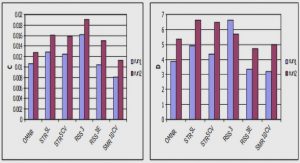Get Complete Project Material File(s) Now! »
The National Consultative Summit/Workshop
On August 14, 1996, Ithuba Trust convened a national summit of its beneficiaries and key stakeholders to evaluate its operations. The invitation to the summit included the following: “Ithuba with its past successes, by virtue of having passed the R100 million mark since the launch of its scratch card operation only three and a half years ago, represents the largest contribution made by a community trust to social causes in the history of welfare and development in South Africa. It is these successes which have now motivated Ithuba to look further to identify more opportunities for further improvement, and to ensure that the policies of Ithuba are in line with those of South Africa’s transformation.” The purpose of the summit was firstly to critically evaluate funding criteria, policies and procedures, with an input from the broad range of stakeholders and networks, and secondly to make recommendations and devise strategies to bring Ithuba Trust in line with South Africa’s Reconstruction and Development Programme aims and objectives. In addition to its beneficiaries, representatives from government, social work professional associations, funders, schools of social work, organized business, trade unions, Ubuntu Trust partners and non-government organizations, participated. In total, forty three organizations were represented. The structure of the summit was composed of a panel discussion, three working groups and plenaries for recommendations.
Skewed partnerships
According to Deloitte and Touché (2001), in their report to the World Economic Forum on the subject “Relationship Portfolio” and partnerships, the forces of globalization and technology have created a world of complexity that it verges on chaos, and as yet, companies have little capacity of coping with the said complexity. The demand and supply for world-class goods and products take place at such high speed, rendering companies, countries and communities incapable of managing the speed. This had led to companies to unbundle their capabilities and keep the strongest partners, abandon the weak ones and seeking those partners who can supply the world-class capabilities they lack. This process has led to a profusion of partnerships of varying strengths and weaknesses. If the developed nations, according to Deloitte and Touché (2001), find the world so complex as a result of technology and globalization and being pressured to seek worldclass partners for their survival and sustainability, what about poor nations and communities alike? There is an undeniable interaction between the rich and poor for a variety of reasons. However, the poor experienced such relationships as securing the interests of the rich, hence skewed partnerships. The poor are now demanding a change to these relationships. It is also an undisputed fact that out of these skewed relationships, the poor lost opportunities for self-development that might rescue them from the perpetual inferior quality of their lives. They now want to reconstruct their lives, at their own terms, for their social, political and economic advancement.
CHAPTER 1: GENERAL INTRODUCTION
1. INTRODUCTION
2. PROBLEM FORMULATION
3. RESEARCH PURPOSE, AIM AND OBJECTIVES
4. RESEARCH METHODOLOGY
5. DATA COLLECTION METHODS
6. ETHICAL CONSIDERATIONS
7. DEFINITION OF KEY CONCEPTS
8. LIMITATIONS OF THE STUDY
9. PRESENTATION OF THE RESEARCH REPORT
CHAPTER 2: ITHUBA TRUST PROFILE
1. INTRODUCTION
2. THE CONTEXT OF ITHUBA TRUST’S EMERGENCE
3. SOUTH AFRICA’S ENABLING LEGISLATIVE FRAMEWORK
4. THE ESTABLISHMENT OF ITHUBA TRUST
5. SUMMARY
CHAPTER 3: POVERTY, INEQUALITY AND SUSTAINABLE DEVELOPMENT
1. INTRODUCTI
2. THE THREATENING NATURE OF POVERTY AND ITS EVOLUTION
3. POVERTY CONCEPTUALIZATION FRAMEWORK
4. POVERTY ERADICATION BARRIERS
5. THE VOICELESS POOR
CHAPTER 4: SOUTH AFRICAN POVERTY INTERVENTION STRATEGIES
1. INTRODUCTION
2. CONTEXT AGAINST WHICH POVERTY ERADICATION STRATEGIES ARE FORMULATED
3. THREE KEY STATE POVERTY ERADICATION STRATEGIES
4. EXAMPLES OF ENABLING LEGISLATION
5. INDIGENOUS STRATEGIES
6. THE ROLE OF THE BUSINESS COMMUNITY
7. POLICY FORMULATION ELEMENTS
8. IMPACT MEASUREMENT FRAMEWORK
9. SUSTAINABLE DEVELOPMENT MODELS
CHAPTER 5: EMPIRICAL STUDY AND FINDINGS
1. INTRODUCTION
2. RESEARCH METHODOLOGY
3. SUMMARY FINDINGS
CHAPTER 6: CONCLUSIONS AND RECOMMENDATIONS
1. INTRODUCTION
2. GOAL AND OBJECTIVES OF THE STUDY





